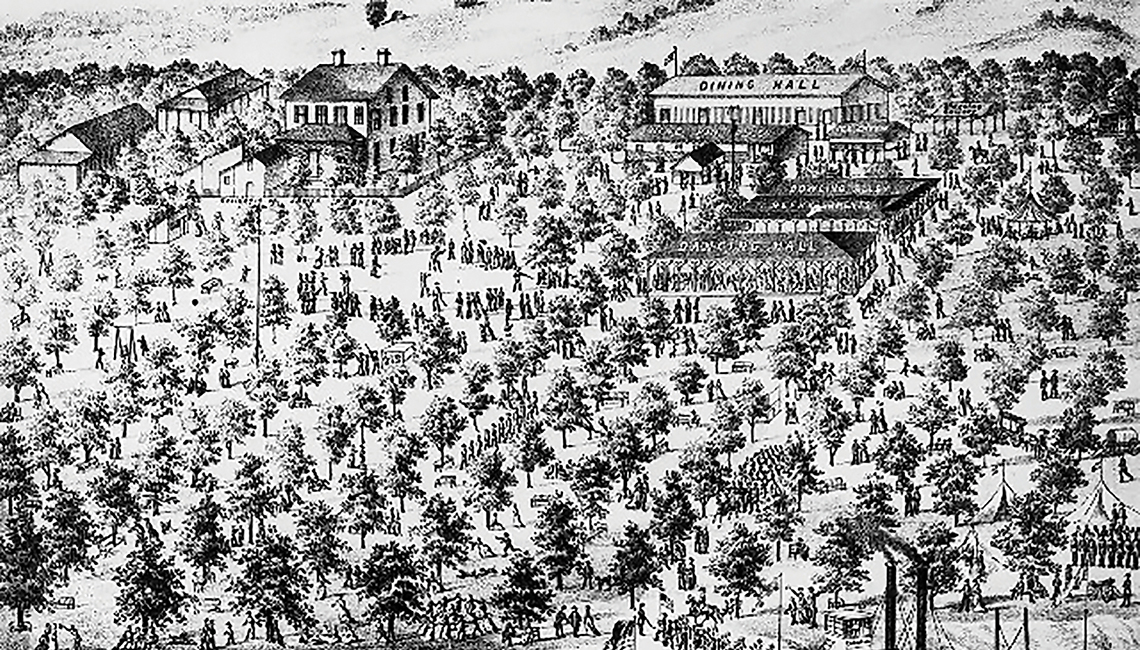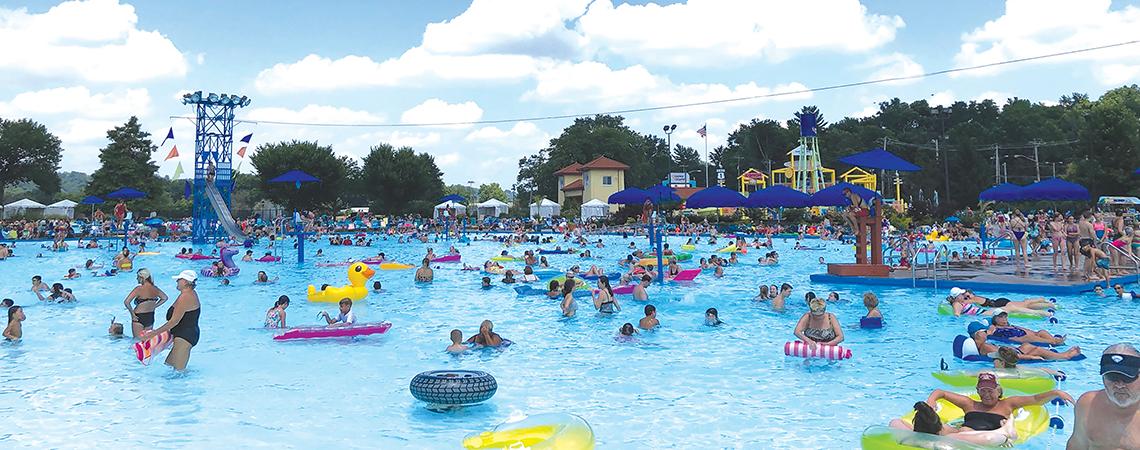Coney Island, the iconic Cincinnati park, has a history of envisioning possibilities and changing with the times — times that have included two world wars, the Great Depression, floods, integration, and now two pandemics.
As the second pandemic of its lifetime seems to be on the wane, Coney Island will open yet again come Memorial Day weekend, more than 130 years after folks first gathered on the spot. “When amusement parks do their jobs,” says Tom Rhein, the park’s senior vice president, “they make time and worries disappear.”
Coney Island's Sunlite Pool
Coney Island has seen its share of transition during its long history. When James Parker bought a 20-acre apple orchard on the banks of the Ohio River east of Cincinnati in 1867, he planted the seeds of a summer-fun treasure. As the story goes, a few Cincinnati businessmen on horseback asked Parker to rent the orchard for a picnic and, smelling success, Parker added a dance hall, a bowling alley, and a carousel.
Parker’s Grove became a daytrip escape from city bustle. After riverboat captains William and Malcolm McIntyre bought Parker’s paradise in 1886, the amusement park became Ohio Grove. Dubbing it “The Coney Island of the West,” the McIntyres brought passengers there from Cincinnati by steamboat.
Over the next few years, Coney Island gained rides and attractions — and popularity. A former cornfield became Lake Como in 1893. By 1925, the park had added an open-air dance palace called Moonlight Gardens and a stone gate to greet passengers arriving by riverboat — including the Island Queen, which brought 4,000 paying customers at a time to the park.
The most impressive addition, however, was Sunlite Pool.
Opened May 22, 1925, Sunlite Pool is still the largest recirculating-water swimming pool in the world, covering almost 2 acres.
During the Depression, a Coney Island and Sunlite Pool trip was a special treat. “We didn’t go on vacations back then,” recalls 90-year-old Joyce McCord, who grew up near Cincinnati. She and her twin sister, Joan, first visited Coney Island with their parents and 3-year-old twin brothers. The girls were 8. “We loved to go to the pool, and a hot dog always tasted better at Coney Island,” she laughs. Joan’s highlight was soft-serve ice cream and listening to the calliope on the Island Queen.
The park’s location by the river, so crucial for its early success and growth, has also been a challenge, as periodic flooding has taken a toll. In 1937, for example, 85 feet of flood water covered Moonlight Gardens, and the park had to be almost entirely rebuilt. Coney Island was also submerged in 1964, and Rhein remembers boating in to his park office after water covered the grounds in 1997.
Through it all, Coney Island remained successful, and in fact, may have been a victim of its own success. Because of ever-increasing crowds (and the precarious flood threat), ownership decided the park had outgrown the space, and in 1972, Coney Island’s amusement park closed upon the opening of King’s Island, north of Cincinnati. Several of Coney Island’s attractions moved there — including the iconic 1926 Grand Carousel.
That could have been the end, of course, but a wave of nostalgia brought the reopening of Coney Island’s amusement park by 1976, and the rides stuck it out until 2019. Now, though Coney Island’s rides are gone again, the park lives on as a water park and picnic ground.
Along with the renowned Sunlite Pool, the stone gatehouse still stands as a historic landmark, and the Parker’s Grove picnic area offers shelters and catering for group events.
Upon the park’s Lake Como, guests can try a Storybook Paddle Boat and glide across the water in gigantic swans or dragons.
This summer, Challenge Zone, the largest Aquaglide swimming pool obstacle course in the U.S., will open in Sunlite Pool’s deep end, joining the Twister, Cannonball Cove, and Typhoon Tower as part of Sunlite Adventures. The Silver Bullet, a 30-foot metal slide erected in 1945, also still stands in the middle of the pool.










